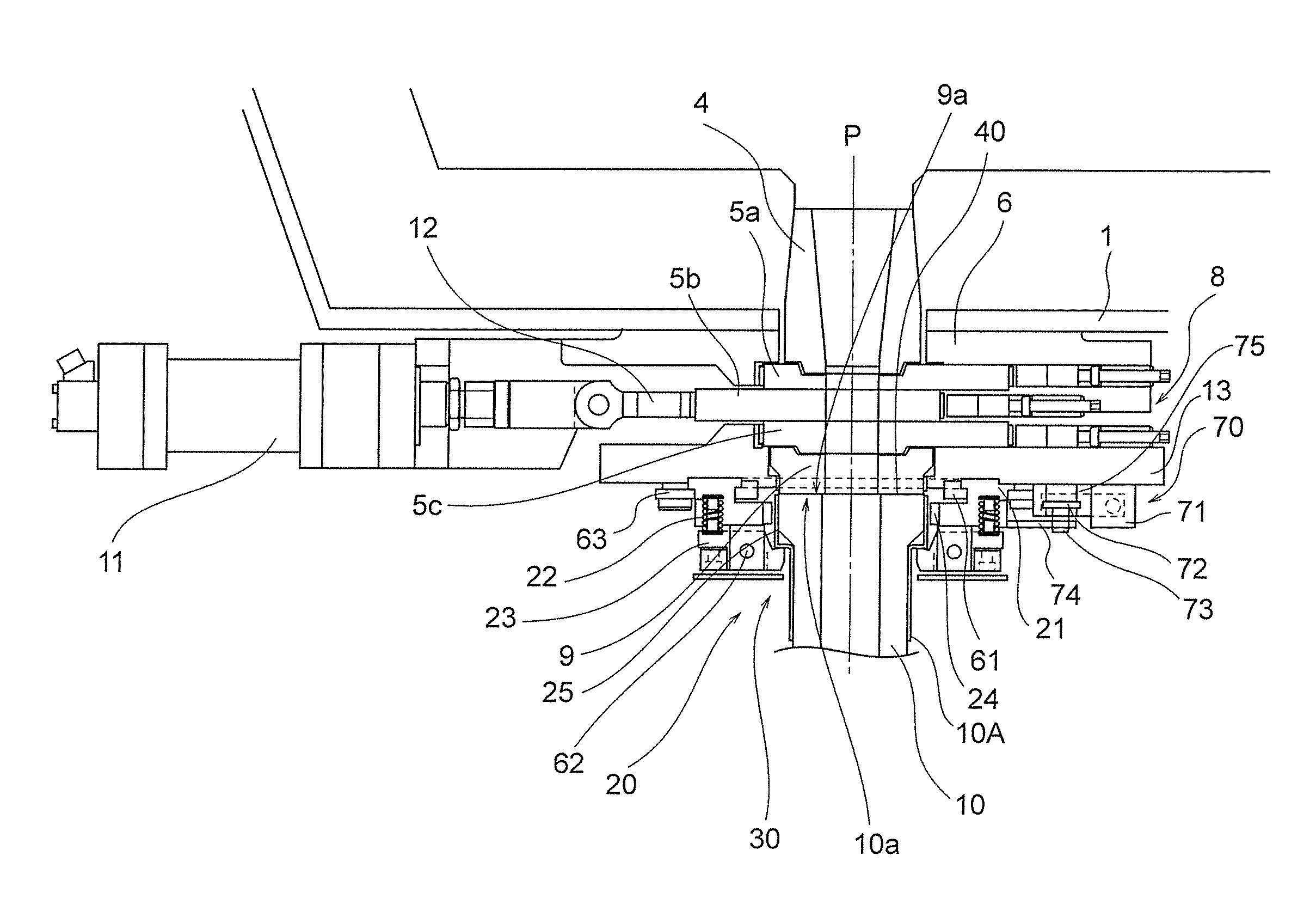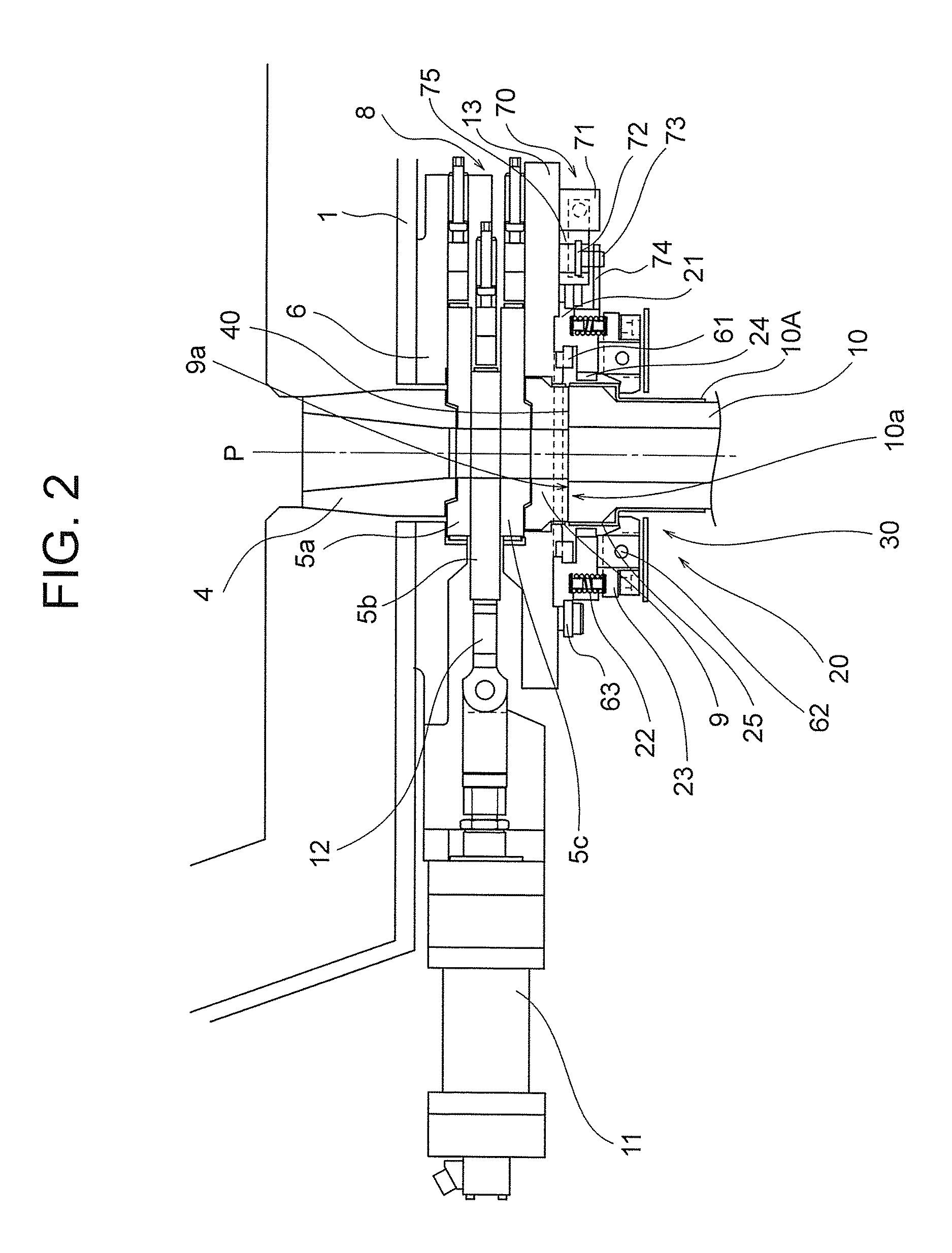Slab continuous casting apparatus
- Summary
- Abstract
- Description
- Claims
- Application Information
AI Technical Summary
Benefits of technology
Problems solved by technology
Method used
Image
Examples
examples
[0052]Hereinbelow, preferred embodiments of the slab continuous casting apparatus according to the invention are described with reference to the accompanying drawings.
[0053]Before explaining the slab continuous casting apparatus according to the invention, the history that the present inventors have developed the present invention is described. That is, the present inventors studied a method for obtaining a rotational flow of molten metal by discharge flows from the submerged nozzle in a slab continuous casting apparatus by way of water model experiments with consulting Patent Document 2 and Patent Document 7. The sizes of the water model experiments were equivalent to those of actual machines, with a slab thickness of 250 mm and a slab width of 2000 mm.
[0054]As a result, the followings were found:
[0055](1) The two-hole nozzle such as Patent Document 7 is superior to the nozzle including four discharge holes such as Patent Document 2;
[0056](2) In case of using a two-hole nozzle, it ...
PUM
| Property | Measurement | Unit |
|---|---|---|
| Angle | aaaaa | aaaaa |
| Length | aaaaa | aaaaa |
| Force | aaaaa | aaaaa |
Abstract
Description
Claims
Application Information
 Login to View More
Login to View More - R&D
- Intellectual Property
- Life Sciences
- Materials
- Tech Scout
- Unparalleled Data Quality
- Higher Quality Content
- 60% Fewer Hallucinations
Browse by: Latest US Patents, China's latest patents, Technical Efficacy Thesaurus, Application Domain, Technology Topic, Popular Technical Reports.
© 2025 PatSnap. All rights reserved.Legal|Privacy policy|Modern Slavery Act Transparency Statement|Sitemap|About US| Contact US: help@patsnap.com



